Inside IHMC Ocala’s hexagonal glass walls you’ll discover the most fascinating research into artificial intelligence, robotics and more.
 You’ve driven by the unique hexagonal shaped building along Silver Springs Boulevard in downtown Ocala. You’ve heard longtime Ocalans call it the old library. Your neighbor takes her children to Science Saturday events. You may have even attended a fascinating lecture there.
You’ve driven by the unique hexagonal shaped building along Silver Springs Boulevard in downtown Ocala. You’ve heard longtime Ocalans call it the old library. Your neighbor takes her children to Science Saturday events. You may have even attended a fascinating lecture there.
And yet you still find yourself trying to recall what exactly the IHMC on the sign in front of the building stands for and what it is they actually do there.
The building is home to the Florida Institute for Human & Machine Cognition, a not-for-profit research institute of the Florida University System that is affiliated with several state universities. The organization is one of the world’s leading research institutes, with scientists and engineers investigating a broad range of topics related to understanding cognition in humans and machines. And now you know what the IHMC stands for.
IHMC has locations in Ocala and Pensacola and the researchers work jointly between the two locations on many projects.
You’re sure to be impressed with IHMC’s areas of research, which may sound like something straight out of the science fiction section of the library. These include: robotics, exoskeletons and human robotic interdependence; human health, resilience and performance; language processing; agile and distributed computing; autonomy and coactive design; computational and philosophical foundations; visualization and human-centered displays, among many others.
Artificial intelligence, or AI, may be what comes to mind as you read terms like augmentics, robotics and human-machine communication, but the work IHMC is doing goes beyond the standard definition.
“For all of us at IHMC, AI is less about artificial intelligence and more about ways we can augment and amplify human intelligence,” says Ken Ford, IHMC’s founder and CEO. “Our scientists are very focused on improving the human condition by creating technological systems that leverage and extend human cognition. That’s the heart of the work we do.”
Research in Ocala
Ford’s words ring true when you look at the scope and variety of research projects being worked on here in Ocala, and how they may impact your life. Think cybersecurity, active defense against email scams and the spread of misinformation on social media, collaborating with computers, assessment tools for the military, and even a smartphone app that could help diagnose COVID-19.
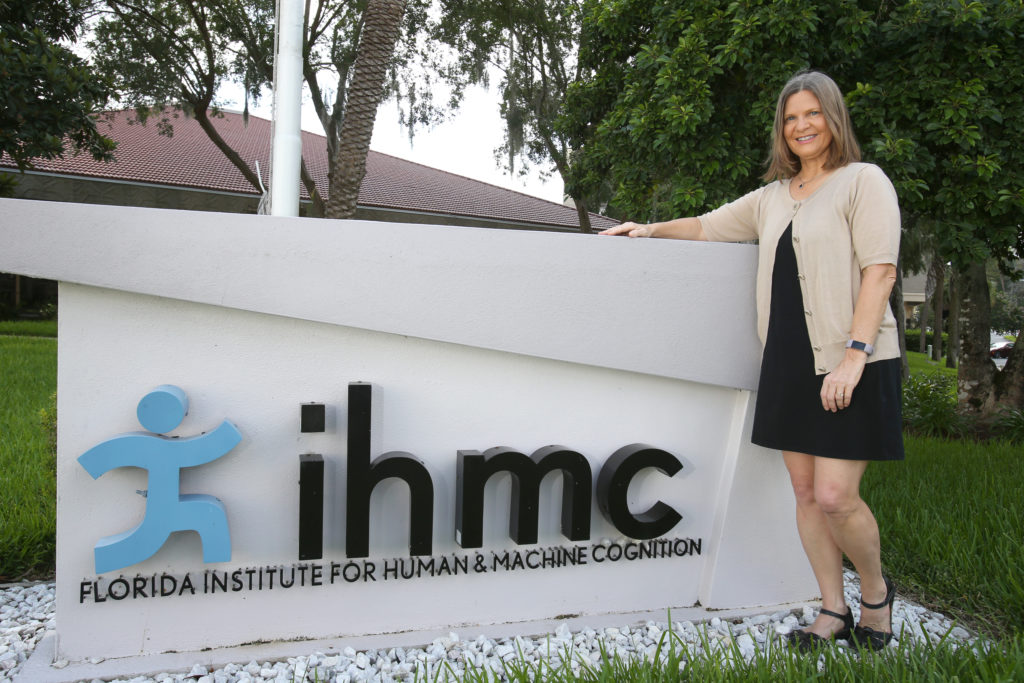 And that’s just a few of the projects we learned about when we met with Laurie Zink, IHMC’s development and community outreach director, and spoke with the five local researchers based out of the Ocala facility.
And that’s just a few of the projects we learned about when we met with Laurie Zink, IHMC’s development and community outreach director, and spoke with the five local researchers based out of the Ocala facility.
One thing that’s clear from our discussion is the emphasis on collaboration at IHMC. As we share about some of the work the local research scientists are doing, keep in mind that all projects include researchers from both locations. They refer to this collaboration as the “six-hour hallway” between Ocala and Pensacola.
“We are one organization and we have great collaborations with the folks in Pensacola,” said Bonnie Dorr, associate director and senior research scientist in Ocala. “Every project we speak about has Pensacola people on it or has had Pensacola people on it at some point.”
Phishing and Email Scams
As a leading researcher in the field of natural language processing, Dorr was recently recruited by the Defense Advanced Research Projects Agency (DARPA), a think tank run by the U.S. Department of Defense, to join its Information Science and Technology (ISAT) study group.
Dorr was excited to talk about the cybersecurity project she is currently working on as it deals with email scams, something almost everyone can relate to. Her research deals with phishing, which is an attempt to gain personal information like usernames, passwords and credit card details via email or electronic messaging by someone posing as a trusted entity. A social engineer is the name the researchers use to identify those who are conducting the scams. In the early stages of a phishing attack, Dorr explains that it is actually bots—autonomous programs on a network that can interact with computer systems or users—that send out these mass emails.
For this project, researchers conducted an experiment to play along and respond, but they stretched responses out over the course of two months. As you progress in communication, you can begin to see when a human—the social engineer—takes over, based on spelling and grammar errors in the email. That should be a clue for you, Dorr says.
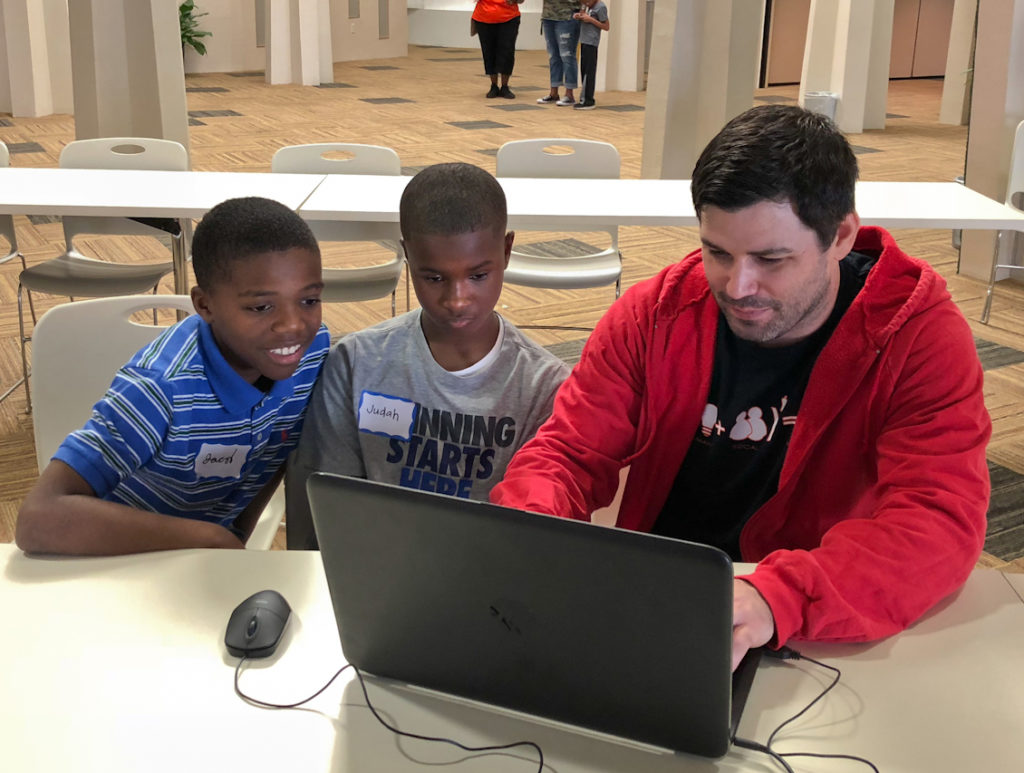 In this scam, the social engineer asks the potential victim to buy gift cards, scratch off the back portions to reveal the numbers and then post photos of them into the email. With that info they can use the gift cards, basically stealing them away from you. But these scammers didn’t realize they were being played by the researchers.
In this scam, the social engineer asks the potential victim to buy gift cards, scratch off the back portions to reveal the numbers and then post photos of them into the email. With that info they can use the gift cards, basically stealing them away from you. But these scammers didn’t realize they were being played by the researchers.
“There were two things going on,” Dorr explains. “We were wasting the scammers’ time, and the other is that we were keeping them from scamming others. We were stalling so that we could collect some additional information and part of the goal of that project was indeed to identify the attacker. They actually revealed where they were because we deployed some software to find out that they were in Central Europe on an Android device. We can tell their language and what type of connection they have.”
Lessons learned from this experiment led to the development of a system that received high marks from DARPA based on the conversational language used in the software to respond to the scammers and make them believe they were communicating with humans.
Working with Dorr on this project was Adam Dalton, who served as lead, and Archna Bhatia, a research scientist in natural language processing at IHMC.
COVID-19? There’s An App For That
Imagine a smartphone app that could help you determine whether you should be tested for COVID-19 based on the sounds of your breathing.
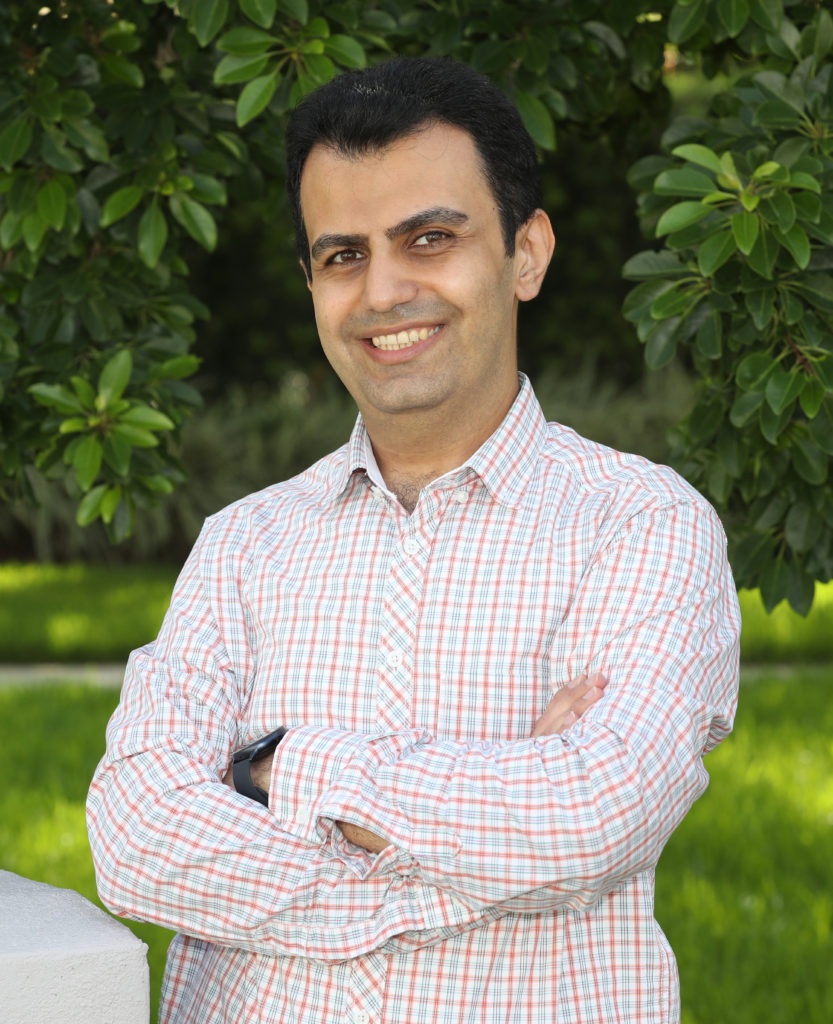 Researchers Bhatia and Arash Mahyari began working on this project several months ago to identify and distinguish COVID-19 breathing from regular breathing and other lung sounds. The conclusions from this research could be used to develop an app that would record a person’s breathing sounds. Based on those sounds, the app would inform you if you were a good candidate for COVID-19 testing. It would not offer a definitive answer for diagnosis, Bhatia notes, but it would reveal positive indicators for the disease. The app could be used by someone to determine if their cough is just a cold or potentially something more.
Researchers Bhatia and Arash Mahyari began working on this project several months ago to identify and distinguish COVID-19 breathing from regular breathing and other lung sounds. The conclusions from this research could be used to develop an app that would record a person’s breathing sounds. Based on those sounds, the app would inform you if you were a good candidate for COVID-19 testing. It would not offer a definitive answer for diagnosis, Bhatia notes, but it would reveal positive indicators for the disease. The app could be used by someone to determine if their cough is just a cold or potentially something more.
The research for this app is based on a similar study conducted by Bhatia and Dorr relates to amyotrophic lateral sclerosis (ALS), or Lou Gehrig’s disease, which is a neurological disease that weakens muscles and impacts physical function. Because it weakens muscles, your speech and lungs can be impacted. Based on the sounds of your voice, researchers can determine if you have ALS or how much it has progressed. Using this research, an app could be developed that would record your speech and offer indicators for the disease. Once work on the app is completed, this would be a valuable tool for the medical community.
Viral Misinformation
We’ve all likely seen or read about an information campaign that has gone viral across social media and news platforms. When such campaigns bring about positive results, it’s considered a good thing. But what happens when it’s a misinformation or propaganda campaign spreading false information, or a scam like the Twitter hack in July regarding a bitcoin deal from 130 high profile accounts?
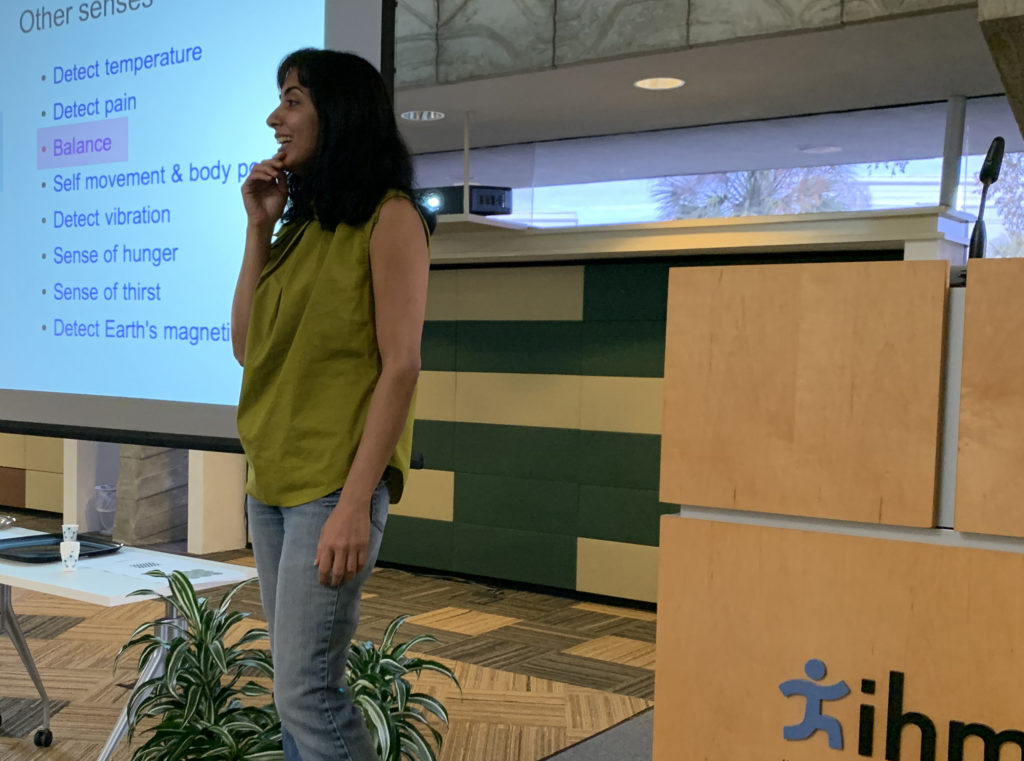 The goal of one of Dalton’s other projects is to be able to identify the start of these information campaigns.
The goal of one of Dalton’s other projects is to be able to identify the start of these information campaigns.
“So, the first goal is to identify when that’s happening and who is initiating the campaign and who is it targeting,” Dalton offers. “Those are the big things that need to be discovered. Once identified, we need to understand the properties of the campaign and what mechanism it is using to disseminate this information. Once that’s known, what are the good counterstrategies to negate the effect of a negative campaign or to encourage the effect of a positive campaign?”
This could be a game changer for social media platforms in the future. The goal is not to squash free speech, even if it’s erroneous. Instead, this software would alert gatekeepers to the campaigns and offer counter posts, from reputable sources, to help dispel the false information being touted.
Computers as Collaborators
Research scientist Ian Perera studies human and computer collaboration and communication, looking for ways computers can be more of a collaborator for humans rather than just a tool. Think Siri or Alexa, but it’s not just those types of programs. Perera is working with systems that can not only give you the information you ask for, but one that remembers your previous requests and can potentially offer additional information related to your request.
In the science domain, with cancer modeling, they are working on something called biocuration. It’s where you take all of the wealth of data you find in papers or databases and create an exchange where scientists can talk with the system and have a back and forth of ideas.
“The computer can come back and say ‘Well, I see this thing that you mentioned is connected to something else that may be relevant,’” he reveals. “So that’s really enabling that back and forth collaboration.”
On Target
Mahyari is also conducting another study that involves examining the electroencephalogram (EEG) signals from the brains of military personnel before and after shooting practice. The brain activity is recorded before a shooting exercise and the accuracy of the shooting is measured. Then they go through two months of training and return for another recording of brain activity before a shooting exercise.
“We want to see if just by looking at the EEG signals before the shooting activity, we can predict who will be a good shooter,” he said. “The second objective is to see which person is a better learner, which of these individuals made improvements after two months of training.”
This information alone has great value to our military, but this work is also being combined with Perera’s collaborative communication analysis work and Bhatia’s speech and language analysis work. While soldiers are having their EEG signals recorded during this shooting task, they will also be evaluated in terms of how they communicate under stress, and Bhatia’s work can be used to measure how they handle stress based on changes in their speech and linguistic patterns.
As Perera notes, “to be a leader, it’s not enough to just be a good shooter—you also have to be able to make vital decisions and communicate effectively under stress. This work brings us closer to quantifying a holistic view of what it means to be a soldier.”
An Architectural Marvel
The IHMC building itself is a bit of an architectural marvel. With its hexagon shape, glass walls and a skylight that spans 30 feet across the center of the roof, it is unlike any other building in the city. It was built in 1969 as the public library. After the library moved to larger quarters in 2004, IHMC purchased the building in 2008 and opened it as its second location in 2010.
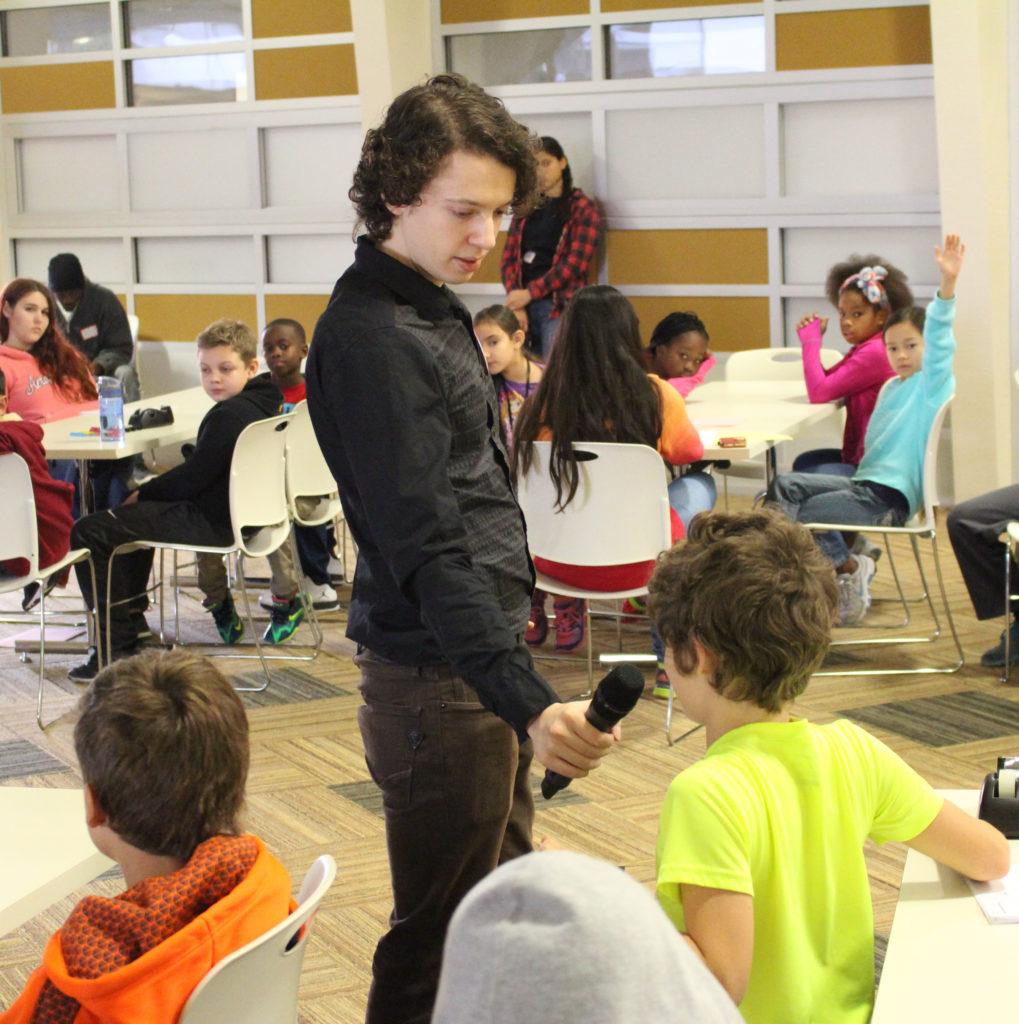 Most would agree this one-of-a-kind building in Ocala is perfect for the one-of-a-kind IHMC and the extraordinary research and collaboration it supports. CEO Ford certainly agrees.
Most would agree this one-of-a-kind building in Ocala is perfect for the one-of-a-kind IHMC and the extraordinary research and collaboration it supports. CEO Ford certainly agrees.
“First of all, Ocala is a great community,” he asserts. “The city has welcomed us with open arms from day one and local officials helped us locate a wonderful facility downtown. Our researchers and staff love the convenience of having an office downtown, where they can walk to so many restaurants for lunch or dinner. Also, Ocala is centrally located in the state and puts us within easy driving distance of other research centers and universities.”
In addition to housing offices and labs for its research scientists, IHMC has hosted a variety of popular public events including its Evening Lecture Series, which features guests speaking on a variety of educational and scientific topics, and monthly Science Saturdays for elementary students during the school year as well as summer robotics camps.
The researchers love these opportunities to connect with the local community.
“That’s one of the great things that I think we all like to do,” Dalton offers about the Science Saturdays events. “We find a topic that is scientifically relevant in some way—like how to build a bridge—and we teach them how to build paper bridges or race cars and teach them how to build race cars out of balloons. It’s just so great to have the opportunity to interact with the community and to teach the next generation of scientists in Ocala. It’s a great place to do this work.”
For more information on IHMC and its many areas of research, go to www.ihmc.us






